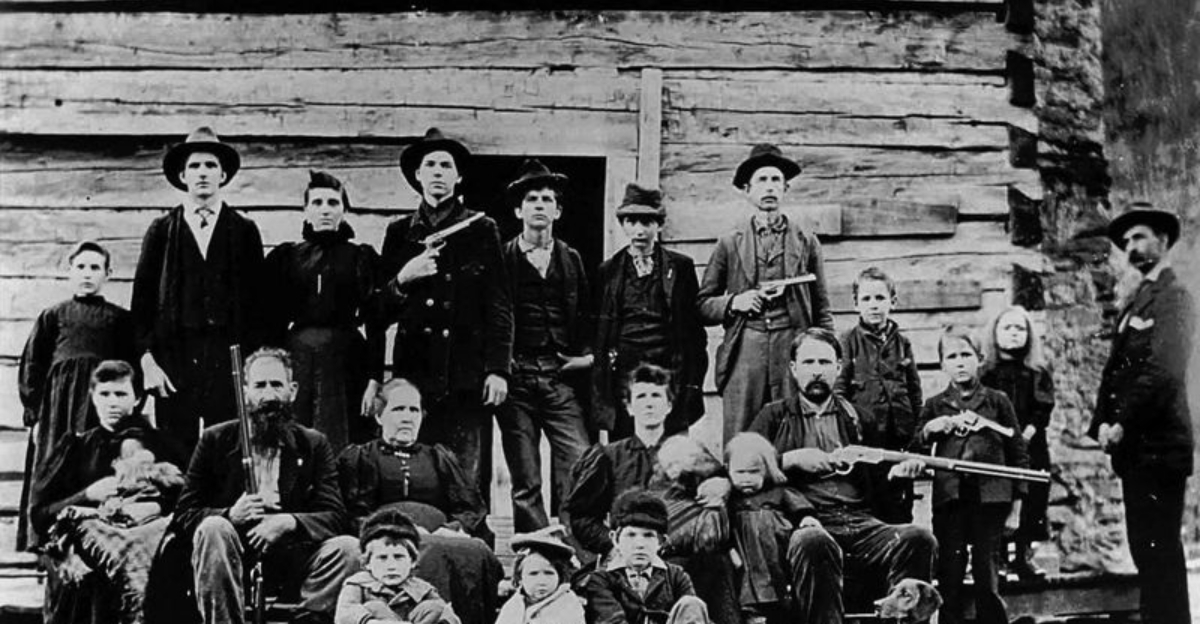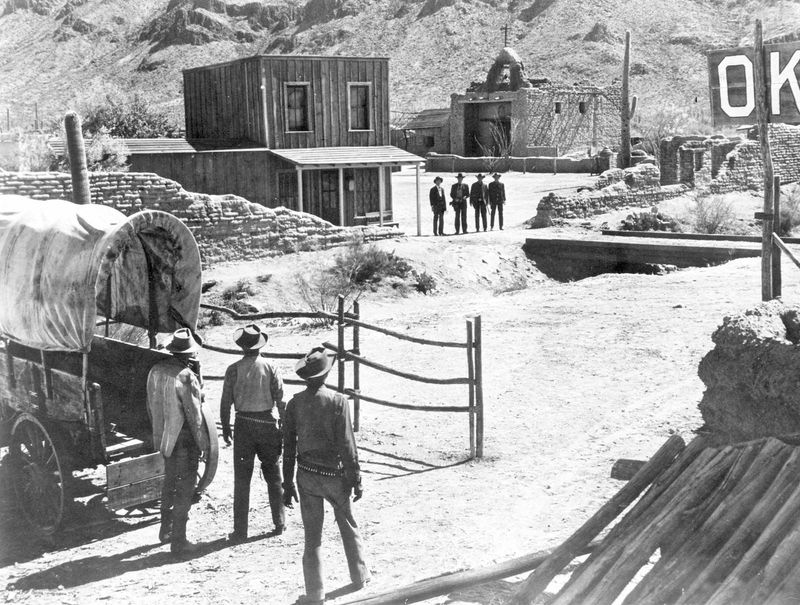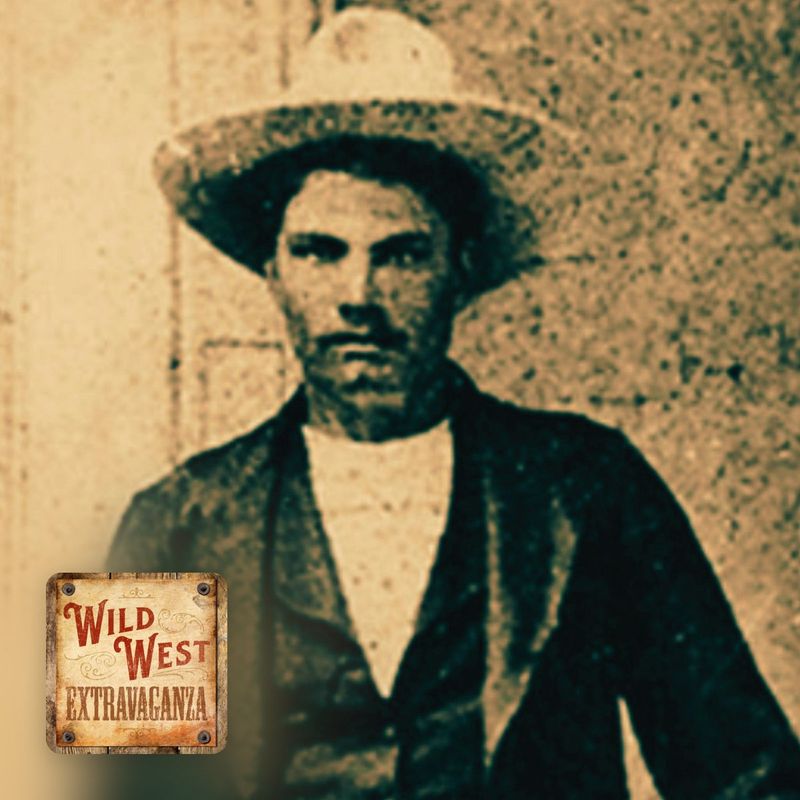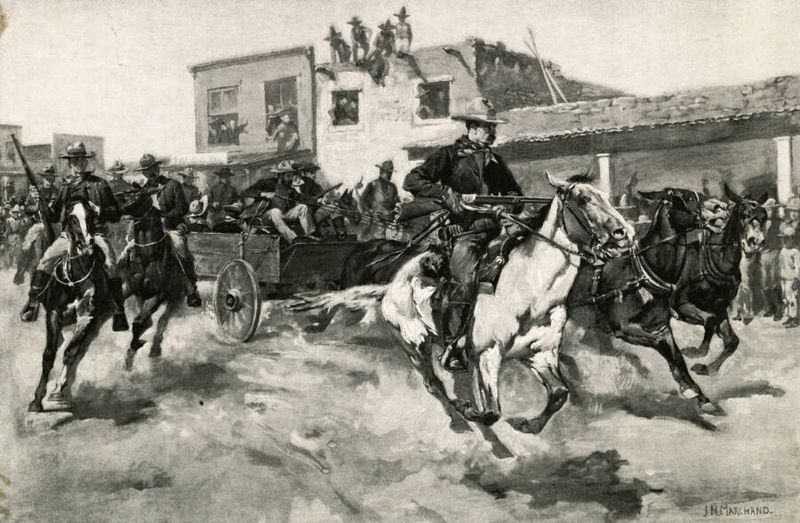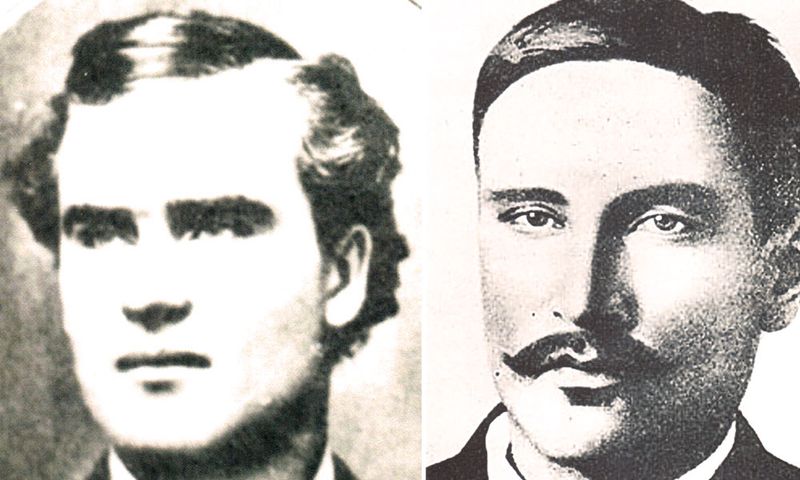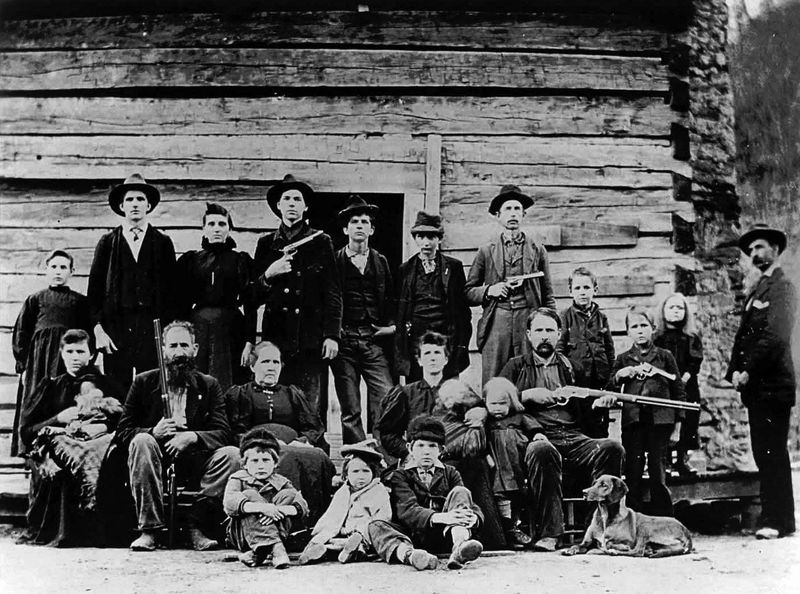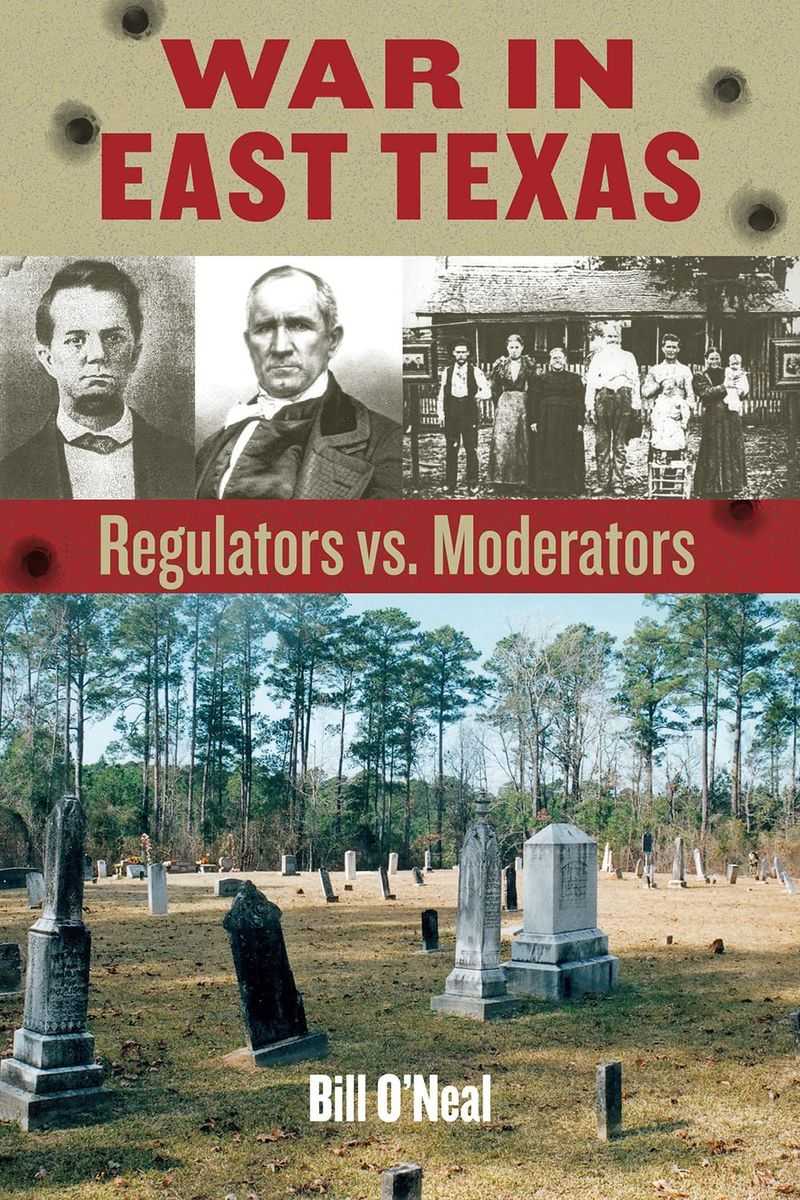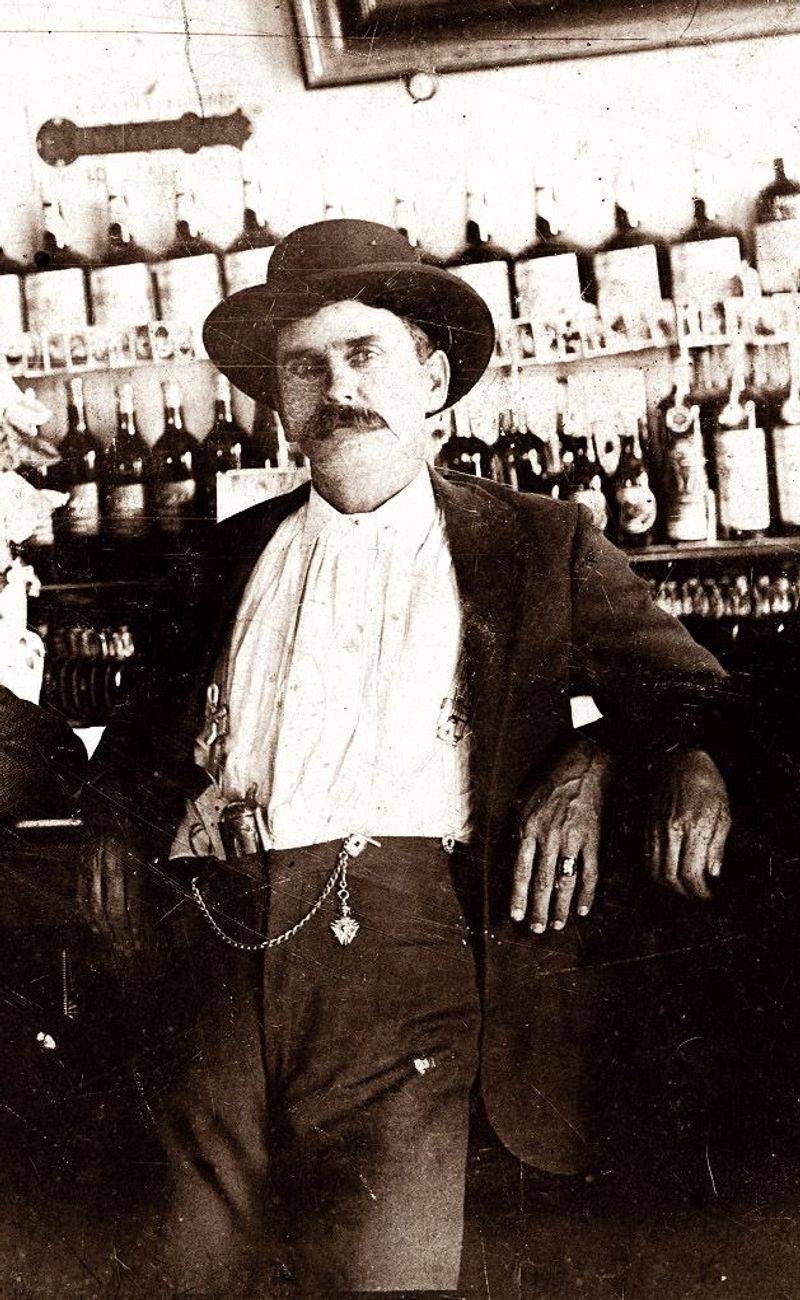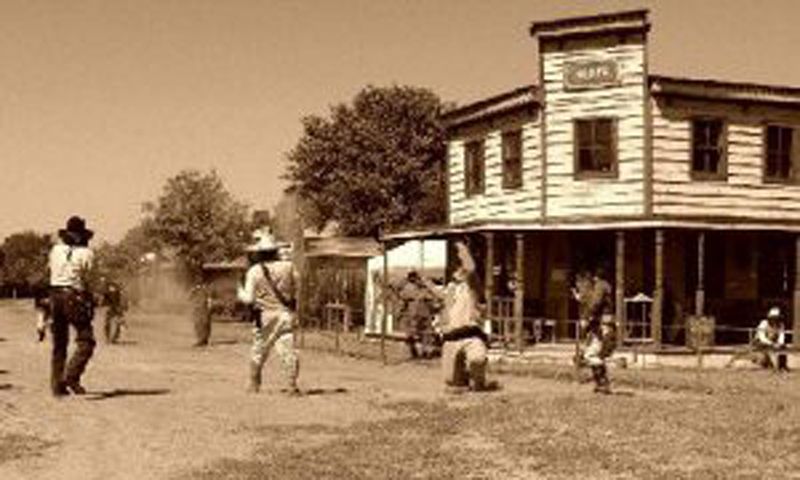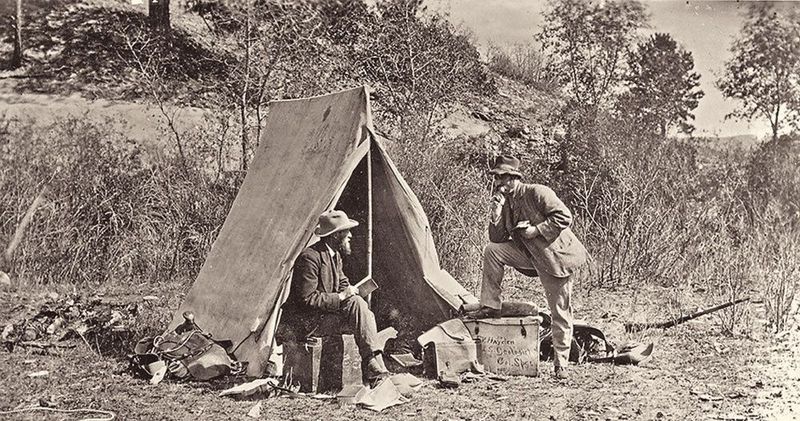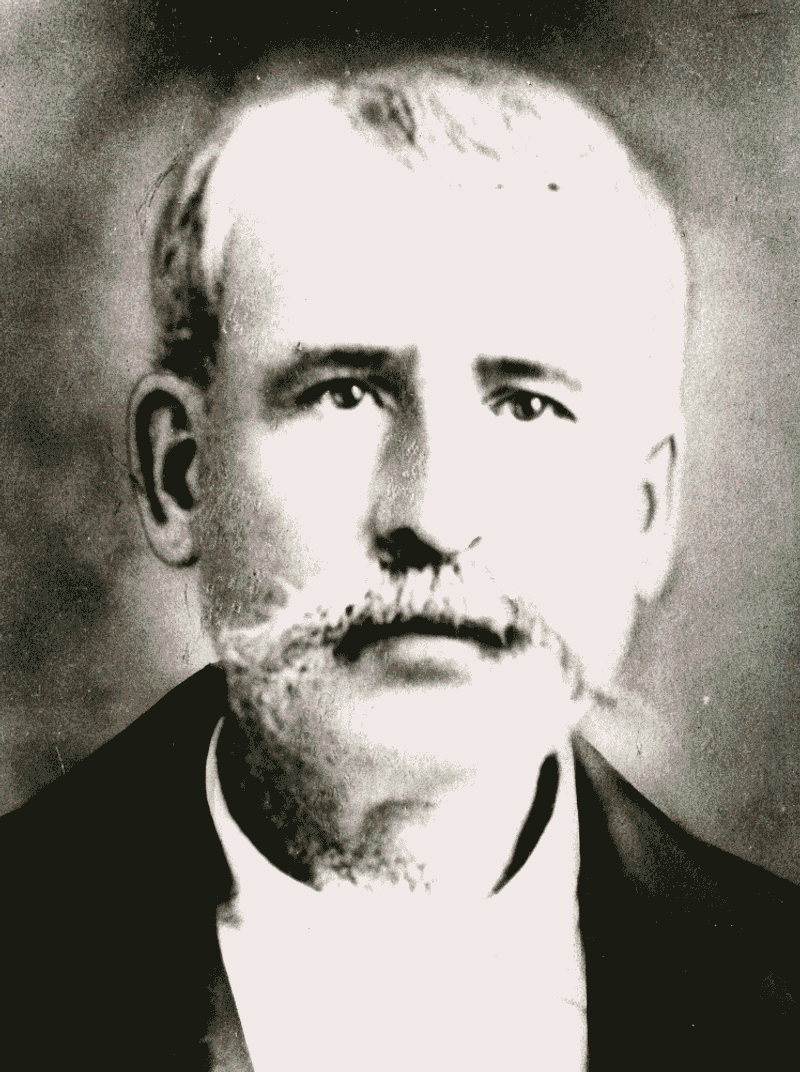The Old West was a landscape riddled with conflict and chaos, where feuds often erupted into dramatic and violent confrontations.
These ten legendary feuds not only ended in bloodshed but also left a lasting mark on American history, forever etching the names of those involved into the annals of time.
1. The Earp–Clanton Feud
In the heart of Tombstone, Arizona, the Earp-Clanton feud unfolded, etching its name into Western lore. Wyatt Earp and his brothers, standing as lawmen, faced off against the Clanton and McLaury families, infamous outlaws of the time.
This volatile rivalry reached its climax in 1881 with the infamous Gunfight at the O.K. Corral, a 30-second showdown that left three men dead.
The conflict was a microcosm of the broader lawlessness in the Wild West, highlighting the constant struggle between order and chaos. Even today, the tale captivates Western enthusiasts.
2. The Sutton–Taylor Feud
In post-Civil War Texas, the Sutton-Taylor feud erupted, marking one of the deadliest conflicts of the era. It all began as a local dispute between lawman William Sutton and the Taylor family, but soon escalated into a decade-long bloodbath involving the Texas Rangers.
Over 35 people were killed as the feud spiraled out of control, fueled by revenge and the chaotic political landscape of the time. The violence echoed across the state, leaving a trail of bloodshed and a legacy of distrust and fear that lingered long after the feud ended.
3. The Lincoln County War
The Lincoln County War was a tumultuous conflict that swept across New Mexico in the 1870s. Involving ranchers, corrupt politicians, and hired guns, the feud catapulted figures like Billy the Kid into infamy.
Initially sparked by economic tensions and land disputes, the war led to widespread lawlessness and chaos, with violent skirmishes erupting throughout the territory.
Billy the Kid emerged as a central figure, his exploits capturing the imagination of the nation. The war left an indelible mark on the region, shaping its history and legacy for years to come.
4. The Tewksbury–Graham Feud
Known as the Pleasant Valley War, the Tewksbury-Graham feud was a brutal conflict in Arizona’s rugged terrain. It began as a cattle and sheep dispute but quickly morphed into a deadly family vendetta, with nearly every adult male from both families killed.
The feud was marked by ambushes, betrayals, and a cycle of revenge that seemed unending.
The violent struggle was emblematic of the broader tensions in the West, where law and order were often elusive. Today, this bloody feud remains a stark reminder of the era’s harsh realities.
5. The Hatfields vs. The McCoys
The Hatfield and McCoy feud is the quintessential American family rivalry, shrouded in the misty hills of the Appalachian border between West Virginia and Kentucky.
Sparked during the Civil War era, this bitter feud claimed more than a dozen lives over several decades. The clash began over accusations of stolen hogs and escalated to involve political and legal battles, ending in a brutal series of revenge killings.
The feud eventually captured national attention, symbolizing the chaos of lawlessness in rural America. The families ultimately reconciled, but the legend lives on in popular culture.
6. The Regulator–Moderator War
The Regulator-Moderator War was an early and brutal conflict that erupted in East Texas during the 1830s and 1840s. It pitted two vigilante groups against each other in a fierce fight over land, power, and law enforcement.
The feud was characterized by violent confrontations, ambushes, and deadly skirmishes, leaving dozens dead.
This early example of frontier justice highlighted the lawlessness of the period and the desperate struggle for control in a rapidly changing landscape. Even today, this conflict serves as a poignant reminder of Texas’ tumultuous history.
7. The Reese–Townsend Feud
The Reese-Townsend feud was a dramatic political conflict that unfolded in Columbus, Texas, during the early 1900s.
What began as a battle for control over a local newspaper quickly escalated into a violent confrontation that culminated in a dramatic shootout in the town’s heart.
Multiple lives were claimed as tensions boiled over, with the feud serving as a stark illustration of the intense and often dangerous political rivalries of the time. The conflict left a lasting impact on the community, shaping its political landscape for years to come.
8. The Brooks–McFarland Feud
The Brooks-McFarland feud erupted in Oklahoma during the 1890s, stemming from disputes over land and law enforcement. The feud culminated in a deadly gunfight at the Spokogee depot, involving local lawmen and outlaws.
This standoff was a vivid example of the Wild West’s chaotic nature, where justice was often sought through gunfire rather than courts.
The intensity of the conflict highlighted the region’s volatile atmosphere and the challenges faced in maintaining order. The feud’s legacy endures, symbolizing the tumultuous transition of the frontier.
9. The Horrell–Higgins Feud
In Lampasas, Texas, the Horrell-Higgins feud erupted over law enforcement issues, leading to a dramatic gunfight at the courthouse. The feud between these two families was marked by multiple retaliatory killings, reflecting the broader lawlessness of the region.
As tensions escalated, both sides engaged in brutal acts of revenge, leaving a trail of bloodshed and fear.
The courthouse shootout was a pivotal moment in the conflict, symbolizing the intense rivalries and volatile nature of frontier justice. This feud remains a vivid chapter in Texas’ violent history.
10. The Lee–Peacock Feud
The Lee-Peacock feud was a bitter post-Civil War conflict in northeast Texas, pitting Confederate sympathizers against Union supporters.
This bloody feud was characterized by brutal ambushes, raids, and a cycle of retaliatory violence that claimed dozens of lives.
The tension between the two factions mirrored the broader national struggles of the Reconstruction era, as communities grappled with deep divisions and a legacy of animosity. The Lee-Peacock feud’s impact was profound, leaving scars that lingered long after the fighting ceased.
